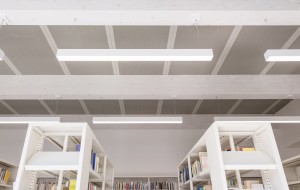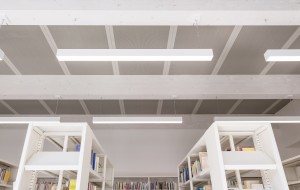Help Your Customer Understand Linear LEDs
 Perhaps your customer says they don’t have the funds to afford an extensive lighting retrofit, and are considering linear LEDs, or TLEDs, as a quick, easy option to save energy and potentially reduce maintenance. If so, consider the following when putting your bid together.
Perhaps your customer says they don’t have the funds to afford an extensive lighting retrofit, and are considering linear LEDs, or TLEDs, as a quick, easy option to save energy and potentially reduce maintenance. If so, consider the following when putting your bid together.
TLEDS are presented as an extreme long life alternative to fluorescent lamps, but it’s important to understand what they actually are, and how they’re configured. LEDs are solid-state devices that are more than heat-sensitive; heat is their mortal enemy. An improperly heat-sinked LED will suffer accelerated degradation, lowering its light output and shortening its useful life, potentially with resultant color shift. Enclosed LED products suffer the most, and the higher the output, the worse the condition. TLEDs are enclosed lamps that are designed to be placed into an undetermined fixture that may vent well, or may contain heat. The lamps may end up too close to a reflector or lens. By contrast, LED luminaires are designed as a system for best thermal attenuation, photometric performance, and color stability. There are four different types of TLEDs:
Type A Replacement Lamp TLEDs use the existing fluorescent lampholders and ballast, so simple replacement of the fluorescent lamp with the TLED is all that’s required. The downside to this system is that the existing ballast’s age is unknown, and it could fail long before end of life of the TLED, negating any maintenance advantages.
Type B Internal Driver TLEDs require the existing ballast to be disconnected or removed, and line voltage is run directly to the lampholders. Obviously this presents potential safety issues; a sticker is required at the luminaire service point, warning of line voltage at the lampholders. Also there are wiring labor costs to consider.
Type C External Driver TLEDs also use existing lampholders, but requires the ballast to be replaced with a new TLED driver. This is more labor intensive, and could cost as much as installing a better performing retrofit kit.
Type A & B TLEDS run off either an existing ballast or on line voltage, using the existing lampholders. A TLED that operates off a range of existing fluorescent ballasts is not optimized, as it needs to accommodate that wide range of ballasts with varying system losses, so resultant energy savings may vary too.
With the efficiency and extensive lamp life available in T8 fluorescent lamps (up to 96 lumens/W and 84,000 hours), some TLEDs may not perform as well. Manufacturer product data sheets will show life performance ratings, but here’s the important info: Fluorescent lamp life is rated at 50% failure of a test batch, while LED life is rated at 30% degradation from original output (also called “L70”). LEDs gradually degrade, rather than mechanically fail, and 30% degradation is the standard for when noticeable light loss has occurred. So an 84,000 hour T8 lamp could perform about the same as a poor quality TLED of 50,000 hour rated life, at a much lower initial cost, meaning they may be the appropriate solution to bridge the gap to an extensive lighting retrofit. In addition, as the LED degrades, it may experience noticeable color shift, sometimes before it reaches L70.
What was once viewed as an efficient and maintenance-friendly solution may actually be a Band-Aid approach. Do your homework; it is your job to help your customer understand the data, as well as the advantages and disadvantages of TLEDs before moving forward.

